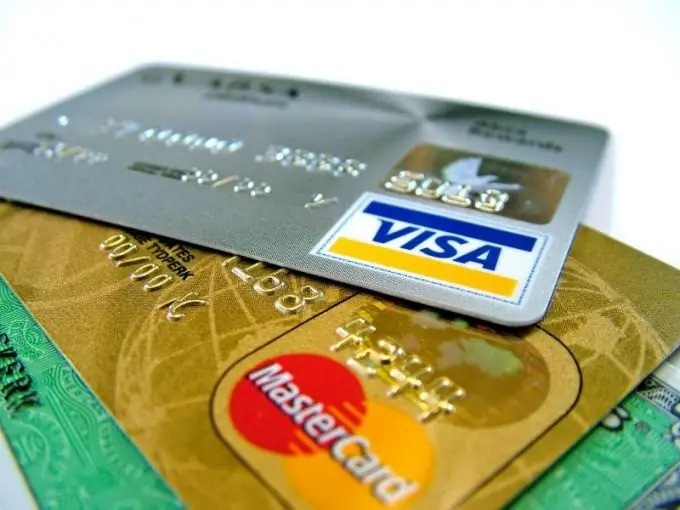- Author Isaiah Gimson [email protected].
- Public 2023-12-17 02:53.
- Last modified 2025-01-24 12:06.
Most bank cards issued today are personalized.
However, there are also unnamed cards on the market. Their main advantage is instant registration.

Differences between a name card and an unnamed card
Today everyone has a choice - to issue a personalized or unnamed plastic card. The unnamed card is also called "unembossed" or non-personalized card. It does not have embossed inscriptions, and all information, such as card number, expiration date, is applied with a laser. At the same time, all personal data is entered into the bank database, and the card number is assigned to a specific owner. The card also provides a place for a sample signature of the owner.
In case of loss or theft of a card, its owner can always block and reissue it. Without knowing the pin code, attackers will not be able to use it.
Many people think that having the name of the owner on the card is additional protection. However, in reality this is not the case, unnamed cards are not inferior in terms of security to their counterparts. In fact, this is a full-fledged bank card.
Banks issue non-personalized payment cards based on Visa and MasterCard payment systems and have all their inherent advantages.
It takes 5-10 minutes to issue a card, this is its main difference from a personalized card, the issue of which takes several weeks. Such efficiency is due to the fact that the bank issues such cards in advance.
Most often, unnamed cards are issued by users who urgently need a card, for example, to travel abroad.
Advantages and disadvantages of an unnamed card
In addition to the high speed of issuing an unnamed card, its advantage is the low cost of issuance. In a number of banks, for example in the "Russian Standard", such a card is provided free of charge.
Most unnamed credit cards are issued under the Electron and Maestro varieties, which have limited functionality.
To issue a card, you need a minimum package of documents - a passport and TIN. In the case of a credit card, it is usually required to provide proof of income.
An inconvenient for users is the fact that he often needs to enter the PIN code in shops and restaurants. The low grade of such cards can also create additional difficulties with online shopping.
From the point of view of the functionality of the card, users may have problems when paying for purchases on the Internet, booking hotels. This is especially true for non-CVV cardholders.
It should be noted that unnamed credit cards have a higher interest rate, because the bank does not have time for a comprehensive check of the borrower. For example, a credit card “Credit in your pocket” from “Russian Standard” bank is issued with an interest rate of 36%, “Credit Express” of “Renaissance Credit” bank - from 42%.






